
In addition to his composing, John [Milton] Cage [Jr.] (September 5, 1912, Los Angeles, CA - August 12, 1992) was also a philosopher, writer, artist, printmaker, and an avid amateur mycologist and mushroom collector.
Cage's father (1886-1964) was an inventor, and his mother Lucretia ("Crete") Harvey (1885–1969) worked intermittently as journalist for the Los Angeles Times.[
In a 1976 interview Cage mentioned "a John Cage who helped [George] Washington in the surveying of Virginia."
Cage described his mother as a woman with "a sense of society" who was "never happy," while his father is perhaps best characterized by his inventions: sometimes idealistic, such as a submarine that inadvertently gave off bubbles (thereby impractically giving away its position), others revolutionary and against the scientific norms, such as the "electrostatic field theory" of the universe.
John Milton Sr. taught his son that "if someone says 'can't' that shows you what to do." In 1944–45 Cage wrote two small character pieces dedicated to his parents: Crete and Dad. The latter is a short lively piece that ends abruptly, while "Crete" is slightly longer, mostly melodic contrapuntal work.
Cage's first experiences with music were from private piano teachers in the Greater Los Angeles area and several relatives, particularly his aunt Phoebe Harvey who introduced him to the piano music of 19th Century. He received first piano lessons when he was in the fourth grade at school, but although he liked music, he expressed more interest in sight reading than in developing virtuoso piano technique, and apparently was not thinking of composition.
By 1928, however, Cage was convinced that he wanted to be a writer. That year he graduated from Los Angeles High School as valedictorian and enrolled at Pomona College, Claremont.
However, in 1930 he dropped out, believing that "college was of no use to a writer" by an incident described in the 1991 autobiographical statement:
"I was shocked at college to see one hundred of my classmates in the library all reading copies of the same book. Instead of doing as they did, I went into the stacks and read the first book written by an author whose name began with Z. I received the highest grade in the class. That convinced me that the institution was not being run correctly. I left."
Cage persuaded his parents that a trip to Europe would be more beneficial to a future writer than college studies.
He subsequently hitchhiked to Galveston and sailed to Le Havre, where he took a train to Paris.
Cage stayed in Europe for some 18 months, trying his hand at various forms of art. First he studied Gothic and Greek architecture, but decided he was not interested enough in architecture to dedicate his life to it.
He then took up painting, poetry and music. It was in Europe that he first heard the music of contemporary composers (such as Igor Stravinsky and Paul Hindemith) and finally got to know the music of Johann Sebastian Bach.
After several months in Paris Cage's enthusiasm for America was revived after he read Walt Whitman's Leaves of Grass. He wanted to return immediately, but his parents, with whom he regularly exchanged letters during the entire trip, persuaded him to stay in Europe for a little longer and explore the continent.
Cage started travelling, visited various places in France, Germany and Spain, as well as Capri and, most importantly, Mallorca, where he started composing.
His first compositions were created using dense mathematical formulae, but Cage was displeased with the results and left the finished pieces behind when he left.
Cage's association with theatre also started in Europe: during a walk in Seville he witnessed, in his own words, "the multiplicity of simultaneous visual and audible events all going together in one's experience and producing enjoyment."
Cage returned to the United States in 1931.
He went to Santa Monica, California, where he made a living partly by giving small, private lectures on contemporary art. He got to know various important figures of the Southern California art world, such as pianist Richard Buhlig (who became his first teacher) and arts patron Galka Scheyer.
By 1933 Cage decided to concentrate on music rather than painting. "The people who heard my music had better things to say about it than the people who looked at my paintings had to say about my paintings," Cage later explained.
In 1933 he sent some of his compositions to Henry Cowell; the reply was a "rather vague letter," in which Cowell suggested that Cage study with Arnold Schoenberg -- Cage's musical ideas at the time included composition based on a 25-tone row, somewhat similar to Schoenberg's 12-tone technique.
Cowell mentioned, however, that before approaching Schoenberg, Cage should take some preliminary lessons, and recommended Adolph Weiss, a former Schoenberg pupil.
Following Cowell's advice, Cage travelled to New York City in 1933 and started studying with Weiss as well as taking lessons from Cowell himself at the New School for Social Research.
He supported himself financially by taking up a job washing walls at a Brooklyn YWCA.
Cage's routine during that period was apparently very tiring, with just four hours of sleep on most nights, and four hours of composition every morning starting at 4 AM.
Several months later, still in 1933, Cage became sufficiently good at composition to approach Schoenberg.
He could not afford Schoenberg's price, however, and when he mentioned it, the older composer asked whether Cage would devote his life to music. After Cage replied that he would, Schoenberg offered to tutor him for free.
Cage studied with Schoenberg in California: first at the USC and then at the UCLA, as well as privately.
The older composer became one of the biggest influences on Cage, who "literally worshipped him," particularly as an example of how to live one's life being a composer.
The vow Cage gave, to dedicate his life to music, was apparently still important some 40 years later, when Cage "had no need for it [i.e. writing music]," he continued composing partly because of the promise he gave.
Schoenberg's methods and their influence on Cage are well documented by Cage himself in various lectures and writings. Particularly well-known is the conversation mentioned in the 1958 lecture Indeterminacy:
After I had been studying with him for two years, Schoenberg said, "In order to write music, you must have a feeling for harmony." I explained to him that I had no feeling for harmony. He then said that I would always encounter an obstacle, that it would be as though I came to a wall through which I could not pass. I said, "In that case I will devote my life to beating my head against that wall."
Cage studied with Schoenberg for two years, but although he admired his teacher, he decided to leave after Schoenberg told the assembled students that he was trying to make it impossible for them to write music. Much later, Cage recounted the incident: "When he said that, I revolted, not against him, but against what he had said. I determined then and there, more than ever before, to write music."
Although Schoenberg never complimented Cage on his compositions during these two years, in a later interview he said that none of his American pupils were interesting, except Cage: "Of course he's not a composer, but he's an inventor -- of genius."

[Doris Dennison, Lou Harrison, Jargaret Jansen, John Cage, Xenia Cage]
At some point in 1934-35, during his studies with Schoenberg, Cage was working at his mother's arts and crafts shop, where he met artist Xenia Andreyevna Kashevaroff. She was an Alaskan-born daughter of a Russian priest; her work encompassed fine bookbinding, sculpture and collage. Although Cage had at least one serious homosexual relationship before (and indeed was in one when he met Xenia), he fell in love immediately.

Cage and Kashevaroff were married in the desert at Yuma, Arizona, on June 7, 1935.

In the late 1930's, Cage went to the Cornish School of the Arts in Seattle, Washington. There he found work as an accompanist for dancers. He was asked to write some music to accompany a dance by Syvilla Fort called Bacchanale (1938). He wanted to write a percussion piece, but there was no pit at the performance venue for a percussion ensemble and he had to write for a piano. While working on the piece, Cage experimented by placing a metal plate on top of the strings of the instrument.

He liked the resulting sound, and this eventually led to his conceiving the prepared piano, in which screws, bolts, strips of rubber, and other objects are placed between the strings of the piano to change the character of the instrument. This creation was influenced by his old teacher Henry Cowell, who wrote pieces requiring performers to pluck the piano strings with their fingers and use metal slides.
It was also at Cornish that Cage founded a percussion orchestra for which he wrote his First Construction (In Metal) in 1939, a piece that uses metal percussion instruments to make a loud and rhythmic music. He also wrote Imaginary Landscape No. 1 in that year, possibly the first composition to employ record players as instruments. It consisted of a quartet using "a muted piano, a suspended cymbal, and two variable-speed turntables on which single-frequency radio test records were played at various steady speeds and also sliding between speeds in siren-like glissandos." Around this time, he met the dancer and choreographer Merce Cunningham, who became a major creative collaborator and his lifelong partner following Cage's split from his then-wife Xenia.
***
Living Room Music (1940)
***
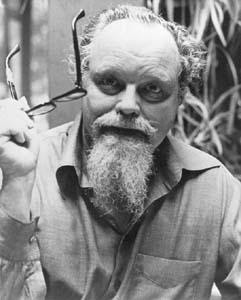
Double Music (1941, with Lou Harrison)
***
Another significant prepared piano work is The Perilous Night (1943).
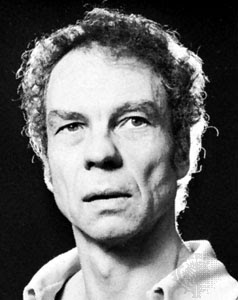
"Cage always referred to it as his 'autobiographical' piece, and his biographer, David Revill has convincingly associated it with the traumas associated with Cage's sexual reorientation, culminating in divorce from his wife (1945) and the beginning of a monogamous homosexual partnership with Merce Cunningham, that lasted to the end of his life. [This piece was] Cage's attempt to express, and thereby relieve, the anxieties he was experiencing in his private life."
In early 1943 Cage composed his Ten-Piece Percussion Ensemble (whose members included his wife Xenia and Merce Cunningham), performed at the New York Museum of Modern Art, February 7, 1943. "It was widely written up in the press, including a picture spread in Life magazine, and won him his first fame."
While at the Cornish School, Cage encountered ideas that influenced his later work. From the Indian musician Gita Sarabhai he heard the Thomas Mace (c. 1613–c. 1709) saying "The purpose of music is to sober and quiet the mind, thus making it susceptible to divine influences."

Cage developed an interest in Hindu aesthetics through the writings of the Hindu mystic Sri Ramakrishna (February 18, 1836 - August 16, 1886),
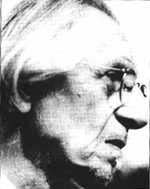
art historian Ananda K. Coomaraswamy (August 22, 1877, Colombo, Ceylon - September 19, 1947, Needham, MA) and, through Coomaraswamy,
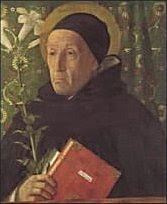
the Christian mystic Meister Eckhart [von Hochheim](c. 1260–c. 1328). These influences are detectable in such pieces such as The Seasons and the String Quartet in Four Parts, whose anti-directional and harmonically static forms suggest the cycles of nature.
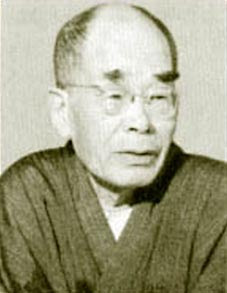
Most influential, though, was Cage’s discovery in the late 40's of Taoism and then Zen Buddhism, through Japanese scholar Daisetz Teitaro Suzuki (October 18, 1870 - July 22, 1966).
***

Sonatas and Interludes (1948)

Sonata I
Sonata V
(older, partial recording)
(newer, complete recording)
The Sonatas and Interludes of 1948 are usually considered Cage's greatest work for prepared piano. Pierre Boulez was one of the work's admirers, and he organized its European premiere. The two composers struck up a correspondence which ended when they disagreed over Cage's use of chance in composing. For Boulez, this was an unacceptable abdication of the composer’s control over his art. However for Cage this was to be a wholly necessary step in his subsequent aesthetic evolution.
***

Suite for Toy Piano (1948)
***
In 1948, Cage joined the faculty of Black Mountain College, where he regularly worked on collaborations with Merce Cunningham. Around this time, he visited the anechoic chamber (a room designed in such a way that the walls, ceiling and floor will absorb all sounds made in the room, rather than bouncing them back as echoes) at Harvard University. Cage entered the chamber expecting to hear silence, but as he wrote later, he "heard two sounds, one high and one low. When I described them to the engineer in charge, he informed me that the high one was my nervous system in operation, the low one my blood in circulation." Cage had gone to a place where he expected there to be no sound, yet sound was nevertheless discernible. He stated "until I die there will be sounds. And they will continue following my death. One need not fear about the future of music." The realization as he saw it of the impossibility of silence led to the "composition" of his most notorious piece, 4′33″.

In 1950, Cage received a copy of the I Ching ("The Book of Changes")
from composer Christian Wolff. Rather than fortune-telling, Cage used it to make compositional decisions. The first work Cage composed in this manner was titled, appropriately enough, Music of Changes (1951). He used the I Ching to determine which notes should be used and when they should sound. Another piece Cage wrote consisted of lines, running horizontally and some vertically across the page of all different length. The performer must determine the speed, pitch, clef, and length of each note based on what he perceived the line to instruct.

Imaginary Landscape No. 4 (1951) is written for twelve radio receivers. Each radio has two players; one to control the frequency the radio is tuned to, the other to control the volume level.

Cage wrote very precise instructions in the score about how the performers should set their radios and change them over time, but he could not control the actual sound coming out of them, which was dependent on whatever radio shows were playing at that particular place and time of performance. This piece marked a move away from scores which had been merely composed with indeterminate methods, to those which were also performatively indeterminate. Such pieces as the Variations series paradoxically placed great responsibility in the hands of the performer in the demands the music made in terms of realizing indeterminate (chance) procedures.
Concerto for Prepared Piano and Orchestra (1951)
Another important work from this time is the Concerto for Prepared Piano and Chamber Orchestra of 1951.
Cage repeatedly claimed that he composed 4′33″ in small units of silent rhythmic durations which, when summed, equalled the duration of the title. Cage suggested that he might have made a mistake in addition. Some have speculated that the title of the work refers to absolute zero, as 4’33″expressed in seconds is 273 seconds, and minus 273 degrees is absolute zero in the Celsius scale; there is, however, no evidence that this relationship is anything more than a coincidence.
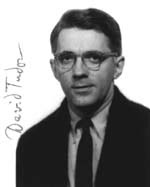
The premiere of the three-movement 4′33″ was given by experimental pianist David Tudor (January 20, 1926 – August 13, 1996, with Cunningham, Cage's closest collaborator during this period)
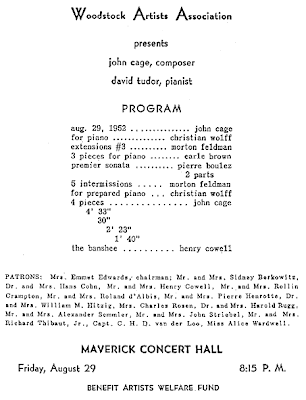
on August 29, 1952 in Woodstock, New York, as part of a recital of contemporary piano music. The audience saw him sit at the piano and, to mark the beginning of the piece, close the keyboard lid. Some time later he opened it briefly, to mark the end of the first movement. This process was repeated for the second and third movements The piece had passed without a note being played -- in fact without Tudor (or anyone else) having made any deliberate sound as part of the piece. Only then could the audience recognize what Cage insisted upon, that “There is no such thing as silence. Something is always happening that makes a sound."
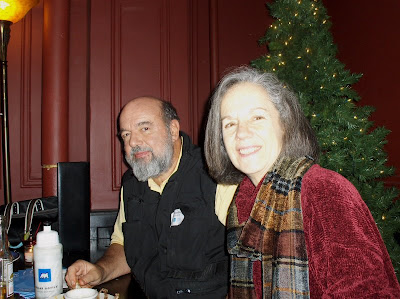
[Richard Kostelanetz and Suzannah]
Richard Kostelanetz suggests that the very fact that David Tudor, a man known for championing experimental music, was the performer, and that Cage, a man known for introducing unexpected non-musical noise into his work, was the composer, would have led the audience to expect unexpected sounds. Anybody listening intently would have heard them: while nobody produces sound deliberately, there will nonetheless be sounds in the concert hall (just as there were sounds in the anechoic chamber at Harvard). It is these sounds, unpredictable and unintentional, that are to be regarded as constituting the music in this piece. The piece remains controversial among those who continue to take it seriously, and is seen as challenging the very definition of music.
While it may challenge the definition of music, it does not challenge any definition of composition -- the earliest score was written on conventional manuscript paper using graphic notation similar to that used in Music of Changes, with the three movements precisely scored to reflect their individual lengths.
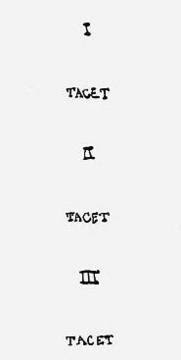
The most famous version of the score is the so-called Tacet edition, which features three movements all on one page, each labelled tacet -- the traditional musical term for when a musician does not play for a movement. The score provides no time limits for any of the parts.

Neither the whole piece nor the duration of the first performance were decided using chance operations. The piece can have any duration and thus any title, but is stuck with the famous first performance duration and title (i.e. movement I: 30’’;- movement II: 2’23’’;- movement III: 1’40’’;).

Cage himself refers to it as his "silent piece" and writes; "I have spent many pleasant hours in the woods conducting performances of my silent piece... for an audience of myself, since they were much longer than the popular length which I have published. At one performance... the second movement was extremely dramatic, beginning with the sounds of a buck and a doe leaping up to within ten feet of my rocky podium." (in John Cage: Silence: Lectures and Writings).
It is a potential problem though if one wishes to regard the unpredictable sounds as constituting the music in this piece. This comes forward clearly in the recording made by the Amadinda Percussion Group, in which the group place themselves in a park. One hears birdsongs, of course, only interrupted twice due to the pauses following each part. If the sounds during the parts are the music, then the sounds between the parts are not, and then the Amadinda recording is true to its source. However, in a performance the listener would not be able to distinguish the parts in sounds, but only in the acts of the performer(s). In this respect Cage’s silent pieces constitute theater more than sound.
John Cage put the influence of Zen Buddhism into practice through music. He described his music as "purposeless play," but "this play is an affirmation of life -- not an attempt to bring order out of chaos, nor to suggest improvements in creation, but simply to wake up to the very life we are living, which is so excellent once one gets one’s mind and desires out the way and lets it act of its own accord." Hence comes his favorite saying nichi nichi kore kōnichi or, every day is a good day.
Conceived in 1952, Theater Piece No. 1 consisted of Cage collaborating with Merce Cunningham, David Tudor,

Robert Rauschenberg, and

Charles Olson
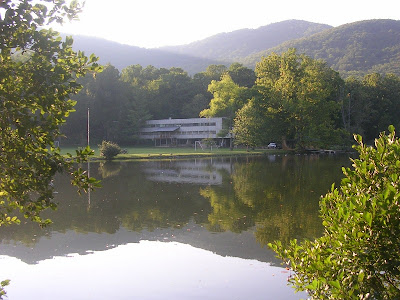
at Black Mountain College where the performance took place amongst the audience. Happenings, as set forth by Cage, are theatrical events that abandoned the traditional concept of stage-audience and occur without a sense of definite duration; instead, they are left to chance. They have a minimal script, with no plot. In fact, a Happening is so-named because it occurs in the present, attempting to arrest the concept of passing time. Cage believed that theater was the closest route to integrating art and (real) life.
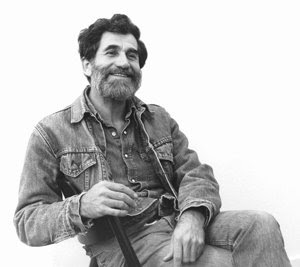
The term Happenings was coined by Allan Kaprow (August 23, 1927 - April 5, 2006), one of Cage's students, who was to define it as a genre in the late 50's. Cage met Kaprow while on a
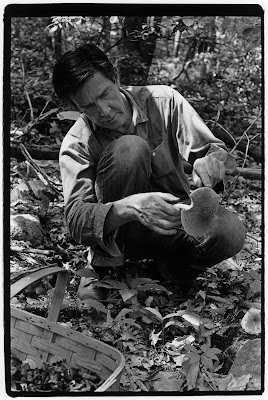
mushroom hunt with
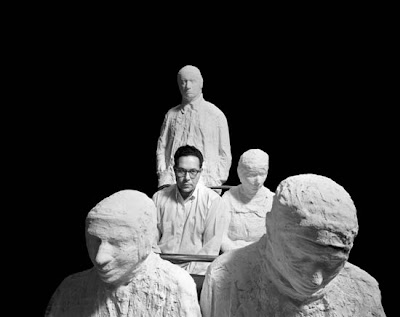
George Segal and invited him to join his class.
Cage had a lifelong interest in mushrooms. He co-founded the New York Mycological Society with three friends and his mycology collection is presently housed by the Special Collections department of the University Library at the University of California, Santa Cruz.
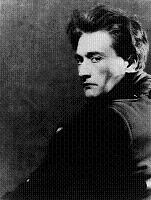
In following these aesthetic (rather than culinary) developments Cage was strongly influenced by the Antoine Artaud (September 4, 1896, Marseille, France - March 4, 1948, Paris) treatise The Theatre and Its Double, and the Happenings of this period can be viewed a forerunner to the ensuing Fluxus movement.
After leaving the Cornish School, Cage joined the faculty of the Chicago School of Design for a time, then moved to New York City. He continued to write music and establish new musical contacts. He toured America with the Merce Cunningham Dance Company several times, and also toured Europe with Tudor.
In a 1957 lecture, Experimental Music, Cage described music as "a purposeless play" which is "an affirmation of life -- not an attempt to bring order out of chaos nor to suggest improvements in creation, but simply a way of waking up to the very life we're living."
John Cage's Experimental Composition classes from 1957 to 1959 at the New School for Social Research have become legendary as an American source of Fluxus, the international network of artists, composers, and designers. The majority of his students had little or no background in music, most of whom were artists. His students included

Jackson Mac Low (September 12, 1922 – December 8, 2004), Kaprow, Al Hansen,
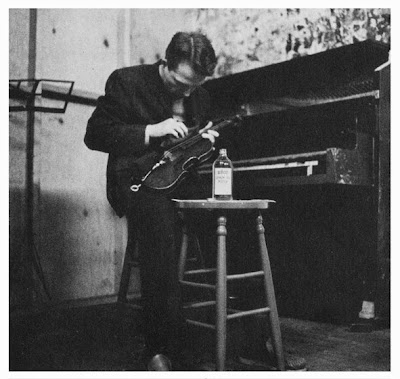
George Brecht (b. 1924), Alice Denham and
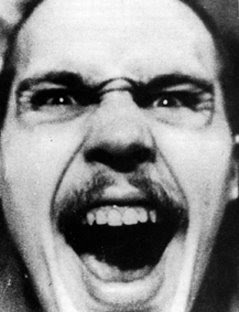
[Dick Higgins performing Danger Music]
Dick Higgins (1938, Cambridge, UK - 1998, Quebec, Canada). Several well-known pieces came from these classes: George Brecht's Time Table Music, and Alice Denham's 48 Seconds.
When chance procedures are applied to the often-conservative infrastructure of the symphony orchestra, in pieces such as the Concert for Piano and Orchestra (1958).
***

Aria / Fontana Mix (1958)
Indeterminacy: New Aspect of Form in Instrumental and Electronic Music (1958)
In October of 1960, Mary Baumeister's Cologne studio hosted a joint concert by Cage and
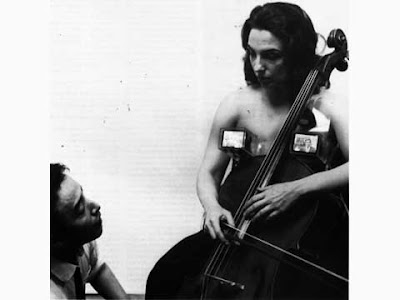
[Nam June Paik / Charlotte Moorman - TV Bra for Living Sculpture]
the video artist Nam June Paik (July 20, 1932 - January 29, 2006), who in the course of his Etude for Piano cut off Cage's tie and then washed his co-performer’s hair with shampoo.
Atlas Eclipticalis (1961) was written for "86 instrumental parts that could be played in whole or in part, for any duration and in any combination from soloist to full orchestra. The I Ching decided which staves carried which clefs, and how they were to be assigned to the various instruments. The performance was a fiasco. The orchestra rebelled along with the audience...some so enraged that they threw their microphones on the floor and stamped on them."
The detailed nature of Cage's compositional use of chance is not always understood. Generally, Cage proceeded from the broadest aspects of a new composition to extremely specific ones. For all these decisions, he determined the number of possibilities for each aspect and then used chance to select a particular possibility: the number of possibilities would be related to one or a series of numbers corresponding to the sixty-four hexagrams of the I Ching. For instance, Cage might choose a musical pitch from three possibilities. Possibility A could be related to I Ching numbers 1–24, possibility B to 25–48, and possibility C to 49–64.

The actual choice of an I Ching number, as described in the book itself when it is used as an oracle, was accomplished by tossing coins or (later) by running a computer program, initially the print-out of one designed at the University of Illinois at Urbana-Champaign under the supervision of Lejaren Hiller

and later one designed by Cage's assistant, the composer Andrew Culver.
Cage’s work from the 60's features some of his largest and most ambitious, not to mention socially utopian pieces, reflecting the mood of the era yet also his absorption of the writings of both

Marshall McLuhan (July 21, 1911 – December 31, 1980), on the effects of new media ("the medium is the message"),

and R. Buckminster ("Bucky") Fuller (July 12, 1895 – July 1, 1983), on the power of technology to promote social change ("the global village" / geodesic domes).
Cage was also highly prolific as a writer, producing a series of increasingly experimental texts that were largely incorporated into several books published during his lifetime. These are Silence (1961), A Year from Monday (1968), M (1973), Empty Words (1979), X (1983) and Anarchy (1988). In these books, featuring writings ranging from straightforward essays to diary entries to wholly experimental writing.
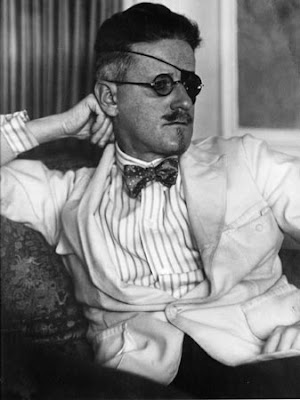
[James Joyce, 1926]
For example, he invented the mesostic, a type of poem in which Cage ‘wrote through’ texts such as James Joyce’s Finnegans Wake. Cage employed chance methodologies to create texts which were often presented spatially on the page in a striking variety of font sizes, typefaces and layouts- an approach towards creating an increasingly visual dimension to text, perhaps inspired by the experimental poetry of E. E. Cummings and lettrism.
The first Musicircus (1967), conceived by Cage and essentially an extension of the Happenings, featured multiple performers and groups in a large space who were all to commence and stop playing at two particular time periods, with instructions on when to play individually or in groups within these two periods. The result was a mass superimposition of many different musics on top of one another as determined by chance distribution, producing an event with a specifically theatric feel. Many Musicircuses have subsequently been held, and continue to occur even after Cage’s death.
Cage was mentioned in Gore Vidal's 1968 novel Myra Breckinridge.

HPSCHD (1969), a gargantuan and long-running multimedia work made in collaboration with Lejaren Hiller, incorporated the mass superimposition of seven harpsichords playing chance-determined excerpts from the works of Cage, Hiller, and canonical classics, with 52 tapes of computer-generated sounds, 6,400 slides of designs many supplied by NASA, and shown from 64 slide projectors, with 40 motion-picture films (space travel and science-fiction movies). The piece was initially rendered in a five-hour performance at the University of Illinois in 1969, in which the audience arrived after the piece had begun and left before it ended, wandering freely around the auditorium in the time for which they were there. More synaesthetic environment than "composition" in any normal sense, HPSCHD demonstrated Cage’s intention to create a viscerally involving environment for exploration by the audience, in which the density and variety of individual elements prevent any single dominant center of interest from arising.
In HPSCHD (computerese for "harpsichord"), Hiller programmed the computer to make the I Ching coin tosses, enabling Cage to make enough random decisions -- more than a million -- to keep the seven players, 52 tape recorders in 52 tuning systems, the wealth of film and slide projectors constantly busy for the alotted time on May 16, 1969.
Cage called the generation of an I Ching number a chance operation. A finished composition generally entailed numerous chance operations.
Some performers often felt that Cage's 'chance' music was so detailed that there was nothing left to chance (or improvise). The performers felt more like slaves of the music rather than interpreters. Cage later went on to say "In my opinion it is the composer's privilege to determine his works, down to the minutest detail."
From the late 60's Cage was also active as a visual artist, working on annual projects at Crown Point Press, from which he produced a series of drawings, prints and watercolors.
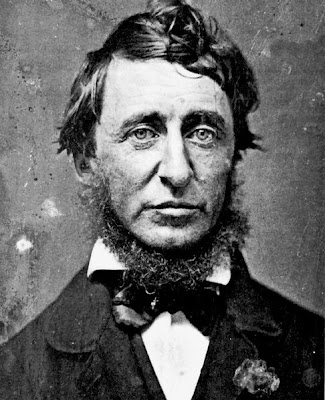
Some of these were inspired by the drawings made by naturalist-anarchist author Henry David Thoreau in his Journal,
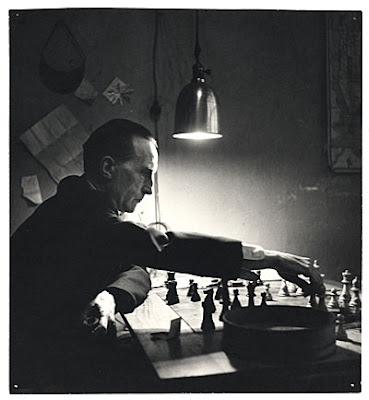
and by the aesthetics of his earlier friend, and chess partner, artist Marcel Duchamp (July 28, 1887 – October 2, 1968). One of his most striking visual pieces is the 1969 work Not Wanting to Say Anything About Marcel, which is comprised of a complex array of superimposed type encased within plexiglas panels. It seems at times as though Cage’s increasing interest in writing and visual art indicated a certain frustration with musical composition. However, as Cage pointed out, he aimed to remain faithful to his promise to Schoenberg to devote his life to music.
Cheap Imitation (1972), resembles the less radical works of his early career, and is based on a re-writing of Satie’s Socrate, marking a return to conventional staff notation.
The overtly political and polemic Lecture on the Weather (1975) is based on Thoreau texts.
Circus was to remain important to Cage throughout his life and featured strongly in such pieces as Roaratorio: An Irish Circus on Finnegans Wake (1979) -- a many-tiered rendering in sound of both his text Writing for the Second Time Through Finnegans Wake and traditional musical and field recordings made around Ireland.
The hyper-virtuosic Freeman Etudes (1980), initially composed for the violinist Paul Zukofsky. was conceived as a useful social demonstration of the performer practically surpassing his own abilities. Given their immense difficulty, such pieces can be considered to be a forerunner of the New Complexity movement.
***
Hymns and Variations (1979)
Litany for the Whale (1980)
***
A series of interviews between Cage and the critic Daniel Charles are collected in the book For the Birds (1981), whose title is a reference to one of Cage's favorite sayings, which is typical of his often subtle, self-referential humor: "I am for the birds, not for the cages people put them in."
Between 1987 and 1990 Cage composed a major series of works entitled Europeras, numbered one to five. Cage was invited to compose the first two works for the Frankfurt Opera. They deconstruct operatic form, yet are not merely parodic. Plots, librettos, and arias (often sung at the same time) were assembled via chance methods from a wide range of conventional 18th and 19th century operas whose texts and scores were in the public domain. Chance determined other aspects as well, from stage lighting, scenery, costumes and props to the actions of the singers. There was no conductor; performers were instead guided by large projections of a digital clock according to strict time intervals. Cage even went so far as to hand out two separate sets of librettos to the audience at the premiere, themselves culled from previous operatic works. Being overtly based as they are upon previous works, the Europeras provide one of the most intriguing examples of Cage defamiliarising the familiar, rendering a complex new web of symbols and meanings overlapping across conventional aesthetic domains.
In two groups of compositions from his last years -- Music for _____ and the Number Piece series -- Cage attempted to reconcile the experimental, process-oriented character of his mature compositions with the idea of a musical work or object. In the Number Piece series in particular, Cage believed that he had finally discovered a way to write music that had harmony, which he now defined as sounds noticed at the same time.
John Cage died in New York City on August 12, 1992, only weeks before a celebration of his 80th birthday organized in Frankfurt by the composer Walter Zimmermann and the musicologist Stefan Schaedler was due to take place; however the event went ahead as planned, including a performance of the Concert for Piano and Orchestra by David Tudor and Ensemble Modern.
Richard Kostelanetz assembled a collage of various interviews in Conversing with Cage (second ed., 2003), and a volume of conversations with Joan Retallack from the 1990's, Musicage, appeared in 1996.
The archive of the John Cage Trust is held at Bard College, NY. The John Cage Music Manuscript Collection held by the Music Division of The New York Public Library for the Performing Arts contains most of the composer's musical manuscripts, including sketches, worksheets, realizations, and unfinished works.
The John Cage Papers are held in Special Collections and Archives department of Wesleyan University's Olin Library in Middletown, Connecticut. They contain manuscripts, interviews, fan mail, and ephemera. Other material, including clippings, gallery and exhibition catalogs, a collection of Cage's books and serials, posters, objects, exhibition and literary announcement postcards, and brochures from conferences and other organizations.
The John Cage Collection at Northwestern University in Illinois contains the composer's correspondence, ephemera, and the Notations collection.
In chapter 75 of Charles Bukowski's Women, the narrator states, "If John Cage could get one thousand dollars for eating an apple, I’d accept $500 plus air fare for being a lemon."
Oscar-winning actor Nicolas Cage (born "Nicholas Coppola" and so-billed in his film début, Amy Heckerling's Fast Times at Ridgemont High), took the last name "Cage" from his admiring both the Marvel Comics character Luke Cage and composer John Cage.
[8912 Nancarrow / 8912 Cage / 8911 Menotti]
